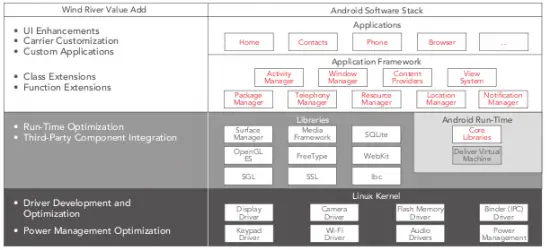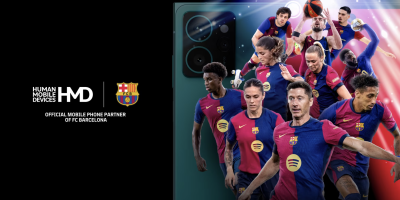“Wind River today [yesterday] announced the immediate availability of its commercial version of open source Android optimized on the OMAP™ 3 platform from Texas Instruments Incorporated (TI). The Wind River Platform for Android is a validated, fully compliant software platform based on the latest versions of the Android software development kit (SDK), available with pre-integrated software from initial partners Adobe, PacketVideo and Red Bend Software; and global support by Wind River.”

“Wind River Platform for Android, the company’s first commercial version of open consortia-based software, is available with the following building blocks:
- Open source Android code validated and tested by Wind River in a rigorous process combining hundreds of manual test cases and tens of thousands of automated test scenarios including compliance with the latest Android Compatibility Test Suite (CTS);
- Pre-integrated third-party software, including existing Flash® technology from Adobe, OpenCORE™ mobile multimedia software from PacketVideo, firmware over-the-air (FOTA) updating and device management software from Red Bend;
- Enhanced Android user interface and personalization options for such common branding functions as boot-up splash screen, locked idle screen, and termination screens and additional gesture-based choices for core phone functions;
- Extended framework and applications including master reset function, music player, performance and power management;
- Dedicated Wind River global customer support and services; and
- Optimization for leading mobile hardware including Texas Instruments’ OMAP34x and OMAP36x platforms.

Wind River’s website offers a wealth of information – including a .pdf you and can download. It’s a whole buncha cut-n-dry information for your imagination to go wild with. I’m seeing the words “benefits” and “enhancements” thrown around an awful lot. ‘Course, just reading the words “Pre-integrated” behind “Flash” brings a smile to my face.
But what implications might things like this have on the Android platform as a whole? That’s a healthy debate worth having but ultimately it will be up to the manufactures. Are we seeing too large of a fragmentation that will hurt us in the long run – or might this actually help to keep things unified?
Give us your thoughts.
[ WindRiver | Press release | gigaom.com ]










Pretty interesting. Since Android is open I don’t see any drawback off the bat. They can’t close it up. If it brings more stability and support for the platform then it could push adoption even further (as if its lagging to begin with). I’m thinking enterprise. They’ll probably do alot of integration of components seen as important for enterprise adoption and maybe give it a more professional (read stuffy) interface as well. I see it as a downstream polish type of thing as Ubuntu is to Debian and Mint is to Ubuntu.
Well Wind River is part of the OHA … so they can’t do anything that causes fragmentation to the ANdroid platform.. all the oha members have signed on the dotted line about that issue..
I want screen shots and vids… how will they port this to devices? Can the end user get it.. or is this an OEM ?
I love my Droid, but I actually /am/ starting to get worried about the fragmentation of the platform. Go hang out on android-developers; you’ll see many, many various threads about how x-and-such doesn’t work right on the Cliq, or the Hero, or whatever, and some desperate developer going, ‘Hey, I don’t have Device X, and I’m getting reports that my app crashes on that. Anyone out there know why this is, since I don’t have one to debug on?’
There are /already/ headaches for Android developers in supporting the many different types of hardware and the slight variations in software. (HTC seems to have broken part of the Market on the Hero, for instance.) So while I think Wind River’s going to provide a good platform, this will still be Yet One More new set of variables into Android development. And then handset manufacturers and carriers will STILL want to do customization to differentiate their Android phone from others, and so the fragmentation continues.
While this announcement is cool, I do also find the continuing fragmentation worrisome.
this ‘microsoftizes’ Android so that it is a compelling alternative to WinMo.
Personally I think that’s a sign that Google isn’t doing the job I think most of us assumed they would take as their primary focus: shepherding packaging of Android with community contributions into an easily consumed, appealing-to-the-ODMs-and-carrier bundle.
But then again, I think we already have ample evidence of that. Every single time I see a phone come out with changes to the OS beyond inclusion of some bookmarks, visual voicemail, and carrier billing, I just want to scream.
This platform is *never* going to surpass iphoneOS with this approach. :-(
I’m sure it was inevitable, but having the closed Flash platform available on the open Android platform is disappointing. Flash either needs to become open (unlikely), or needs to be replaced. HTML5, anyone? Let’s kill Flash while we still can.